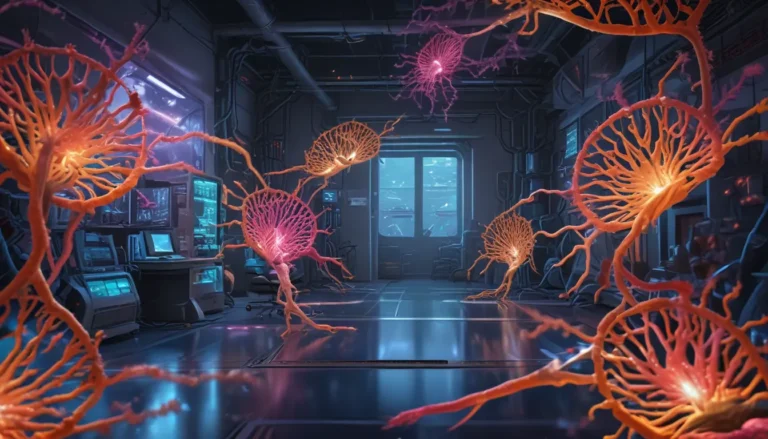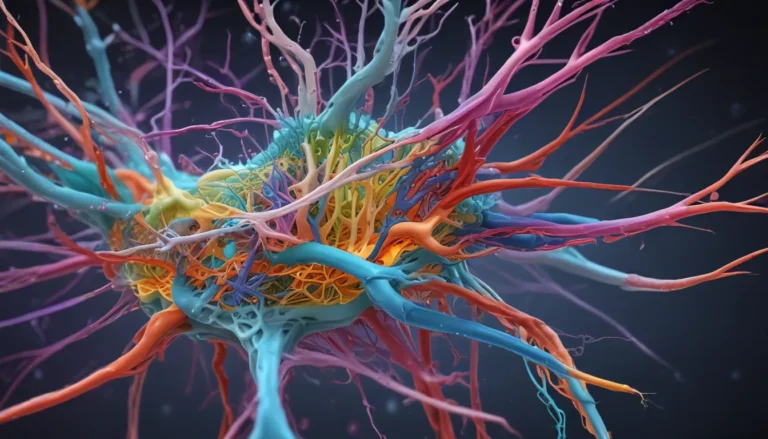A Note About Images: The images used in our articles are for illustration purposes only and may not exactly match the content. They are meant to engage readers, but the text should be relied upon for accurate information.
Are you ready to delve into the captivating world of chemiosmotic coupling? This intricate biological process plays a crucial role in energy production in living organisms, serving as a power plant for cells by harnessing the energy stored in the electrochemical gradient across a membrane. From its discovery by biochemist Peter Mitchell to its significance in diverse organisms and some mind-boggling adaptations, chemiosmotic coupling is truly a marvel of biology and energy metabolism.
Unveiling the Mysteries of Chemiosmotic Coupling
Chemiosmotic Coupling: A Vital Process in Cellular Respiration
At the core of cellular respiration lies chemiosmotic coupling, an essential mechanism that occurs in the mitochondria, where energy in the form of ATP is generated. This process powers the cell’s activities and ensures its survival.
Powering Up with Ion Movement
Chemiosmotic coupling is fueled by the movement of ions, particularly protons, across a membrane. This movement establishes an electrochemical gradient that drives ATP synthesis, providing the cell with the energy it needs to function.
The Trailblazing Chemiosmotic Theory
In 1961, Peter Mitchell proposed the groundbreaking chemiosmotic theory, revolutionizing our understanding of how cells generate energy. Despite facing initial skepticism, experimental evidence later validated this pioneering concept.
ATP Synthase: The Maestro of Energy Production
Central to chemiosmotic coupling is ATP synthase, the enzyme responsible for ATP synthesis. By utilizing the energy from the electrochemical gradient, ATP synthase converts ADP and inorganic phosphate into ATP, the cell’s energy currency.
A Process Shared Among All Organisms
Chemiosmotic coupling is not limited to specific types of cells—it occurs in both prokaryotes and eukaryotes, showcasing its fundamental importance across different organisms, from simple bacteria to complex multicellular beings.
Illuminating Diverse Facets of Chemiosmotic Coupling
Establishing Harmony in Photosynthesis
Beyond cellular respiration, chemiosmotic coupling also plays a crucial role in photosynthesis, particularly during the light reactions. Here, it facilitates ATP production, contributing to the plant’s energy needs.
The Grand Unification of Energy Production
By coordinating multiple protein complexes, such as the electron transport chain and ATP synthase, chemiosmotic coupling provides a unified explanation for how cells produce energy efficiently. This interplay ensures that energy from the electron transport chain is seamlessly coupled with ATP synthesis.
Driving Cell Homeostasis with Precision
Maintaining a delicate balance within the cell, chemiosmotic coupling ensures that ATP production powers various cellular processes, contributing to the overall stability and functionality of the cell.
A Pillar of Evolutionary Consistency
Throughout the course of evolution, chemiosmotic coupling has remained a constant, indicating its critical role in cellular energy metabolism. Both chloroplasts in plant cells and mitochondria in animal cells rely on this process for ATP generation.
Navigating Through the Intricacies of Chemiosmotic Coupling
The Role of Proton Motive Force
At the heart of chemiosmotic coupling lies the proton motive force, created by the difference in proton concentration across a membrane. This force serves as the driving factor behind the energy production process.
An Exemplar of Energy Coupling Mastery
Chemiosmotic coupling exemplifies the art of energy coupling, showcasing the efficient transfer of energy from one process, such as the electron transport chain, to another process, ATP synthesis. This intricate dance ensures the seamless production of energy.
Uncovering the Consequences of Disruption
Disruption to chemiosmotic coupling can have severe repercussions, leading to a decrease in ATP production that can adversely affect cellular function and overall organismal health. Maintaining the integrity of this process is crucial for sustaining life.
Efficiency at Its Core
One of the hallmarks of chemiosmotic coupling is its unparalleled efficiency in ATP synthesis. Despite requiring only a small number of electron transfers, this process can yield a significant amount of ATP, showcasing its economic use of energy.
Journeying Towards New Horizons in Bioenergetics
From Theory to Practice: Exploring Real-world Applications
Studying chemiosmotic coupling has paved the way for advancements in bioenergetics, expanding our understanding of energy generation and utilization in living organisms. This research holds promise for various areas, including bioenergy production, drug development, and the study of neurological disorders.
Therapeutic Insights and Evolutionary Connections
With the potential to be targeted for therapeutic purposes, understanding and manipulating chemiosmotic coupling could offer new avenues for treating diseases related to energy metabolism, such as cancer and neurodegenerative disorders. Moreover, the evolutionary implications of chemiosmotic coupling underscore its crucial role in shaping life on Earth.
Conclusion: Unveiling the Marvels of Chemiosmotic Coupling
In conclusion, chemiosmotic coupling stands as a captivating and vital process that underpins the functioning of living organisms. By unraveling the intricate process of ATP synthesis and energy generation, researchers continue to unearth new insights into cellular function and energy metabolism. As we navigate through the complexities of chemiosmotic coupling, we pave the way for innovative discoveries that have the potential to transform how we perceive and harness energy within cells.
FAQs: Navigating the Essentials of Chemiosmotic Coupling
- What is chemiosmotic coupling?
-
Chemiosmotic coupling is a biological phenomenon that involves the generation of ATP through the movement of ions across a membrane, driven by an electrochemical gradient.
-
Where does chemiosmotic coupling occur in cells?
-
Chemiosmotic coupling takes place in various cellular structures, such as the mitochondria in eukaryotic cells and the plasma membrane in bacteria.
-
How does chemiosmotic coupling relate to cellular respiration?
-
Chemiosmotic coupling is a key process in cellular respiration, providing the energy needed for ATP synthesis and sustaining cellular functions.
-
Are there any evolutionary implications of chemiosmotic coupling?
-
Yes, chemiosmotic coupling is believed to have played a significant role in the evolution of life on Earth, aiding organisms in efficiently generating ATP and utilizing energy.
-
Can chemiosmotic coupling be targeted for therapeutic purposes?
-
Understanding and manipulating chemiosmotic coupling could lead to the development of novel therapeutic strategies for diseases related to energy metabolism, offering new avenues for treatment.
-
What are the applications of studying chemiosmotic coupling?
- Studying chemiosmotic coupling has broad implications, ranging from bioenergy production to drug development and the understanding of diseases linked to energy production and metabolism.
Unlocking New Perspectives in Cellular Bioenergetics
Dive deeper into the realm of cellular bioenergetics by exploring the intricate processes of ATP synthesis, electron transport chains, and membrane potential. These essential components play a pivotal role in maintaining cellular homeostasis and enabling diverse biological functions. As you embark on this journey of discovery, may you uncover new vistas of knowledge and appreciation for the wonders of chemiosmotic coupling!
Embracing a Culture of Trust and Knowledge
At our core, we are committed to delivering trustworthy and engaging content that sparks curiosity and learning. Every fact we share is contributed by real users like you, ensuring a diverse range of insights and information. Our dedicated editors meticulously review each submission, guaranteeing the highest standards of accuracy and reliability. Trust in our commitment to quality and authenticity as you navigate through the fascinating realm of science and discovery.






